
The Business of Fashion
Agenda-setting intelligence, analysis and advice for the global fashion community.

Agenda-setting intelligence, analysis and advice for the global fashion community.
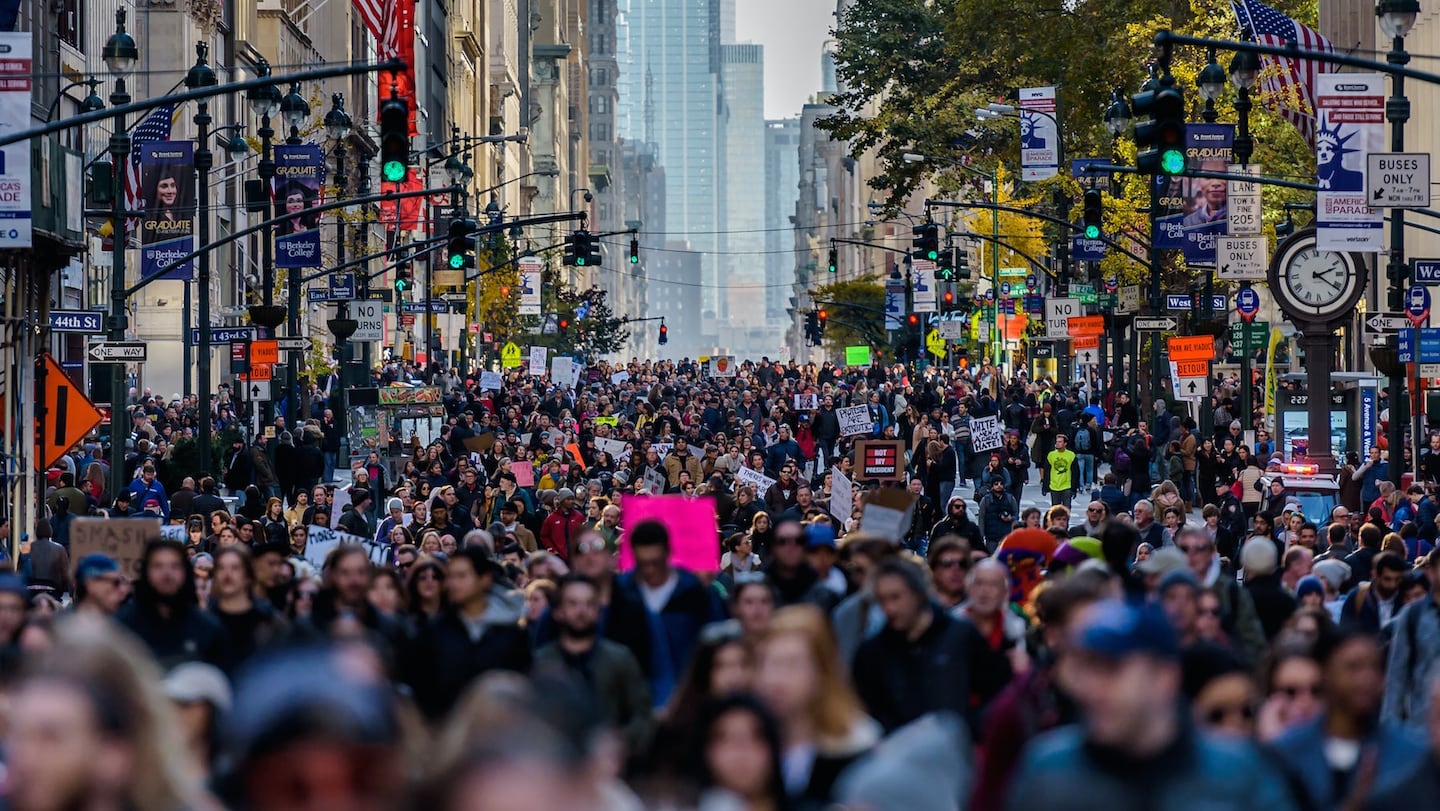
LONDON, United Kingdom — This has been one of the hardest years the fashion industry has ever experienced. Across all market segments, product categories and geographies, the industry has been shocked by tremors in the global macroeconomic and geopolitical sphere, large-scale shifts in consumer behaviour, and intensifying business pressures to produce more for less — less time, less money and less effort.
Indeed, the prevailing business sentiment amongst fashion industry insiders reflects the challenges of managing in this complex environment. According to the BoF-McKinsey Global Fashion Survey, 67 percent of respondents — a mix of top fashion executives, creatives, investors and other industry insiders — believe that conditions for the fashion industry have become worse over the past 12 months. Not only are they overwhelmingly pessimistic about the year’s performance, but the top three words they selected to describe the industry today are: uncertain, changing, and challenging.
This is in part due to the wide range of challenges the industry has faced in 2016. Top of the list of survey respondents’ worries were volatile shifts in the global economy, followed by competition from online players and decreasing foot traffic, and the speed of changing consumer preferences. In addition, businesses were concerned about both their top and bottom lines, with margin erosion from increased discounting and a general slowdown of sales growth this year. The last group of concerns centred on the increased speed to market and changes in the fashion cycle seen in 2016.
All this notwithstanding, the industry remained positive about growth opportunities, highlighting digitisation and e-commerce as by far the single biggest opportunity of 2016. Interestingly, while some businesses saw increased speed to market as an industry challenge, others saw “see-now, buy-now” as an excellent new opportunity. Finally, all market shifts result in winners and losers — and those smart enough to master this time of unprecedented change have the best chance to emerge as winners in the coming year.
ADVERTISEMENT
The industry has been shocked by tremors in the global macroeconomic and geopolitical sphere, large-scale shifts in consumer behaviour, and intensifying business pressures to produce more for less — less time, less money, and less effort.
1. Age of uncertainty
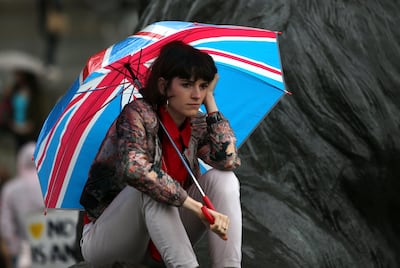
A Brexit protest | Photo: Justin Tallis/Getty Images
Global disruptions caused by political conflicts, terrorism and financial crises have made the world more volatile and uncertain. Only one thing is certain: instability is here to stay. According to McKinsey’s Global Executive Survey among over 1,600 global CEOs, concerns about the threat of terrorist attacks, the slowdown of China’s economic activity, geopolitical instability and the exit of one or more countries from the Eurozone have increased over the past year. Terrorism provides an example of how instability can affect the entire value chain for the fashion industry. Not only have sourcing regions suffered from attacks in the past, but fears of terrorist activity can keep shoppers out of certain areas or discourage tourists from visiting destinations that depend on them as consumers. For much of the year, the outcome and impact of the recent US election were the main topic of speculation.
As a fast-moving, globally connected industry, fashion is uniquely exposed to this dynamic.
Fashion purchases are often emotional ones, and if consumers are feeling uncertain or scared, they are less likely to buy. Many fashion players are working to develop the agility they need to respond to short-term changes, such as abrupt drops in demand that occur when consumers stay away.
Volatility takes many forms. Currency has been more volatile in 2016 than it was on average for the past five years. Meanwhile, a study from the McKinsey Global Institute (MGI) shows global debt has risen faster than GDP. Many factors are continuing to amplify these trends. For example, the world is increasingly interconnected: by 2020 MGI expects some 940 million online shoppers to spend almost $1 trillion on cross-border e-commerce transactions. Industrialisation and urbanisation in emerging economies, ageing populations in established markets and new technologies further complicate the current environment.
Fashion faces all these challenges and more — including the partial commoditisation of the fashion market, faster fashion cycles and compliance and sustainability issues. Demand can fluctuate widely, while shocks to the cost base, such as the impact of plummeting exchange rates on sourcing costs, are a constant threat. As a result, the value created by apparel and luxury companies varies much more than it does for the market overall.
2. China interrupted
ADVERTISEMENT
As highlighted by the BoF-McKinsey Global Fashion Survey, a key topic of discussion over the past year has been the economic slowdown in China, which has been one of the key growth markets for fashion since the 2008 financial crisis. Chinese GDP growth has slowed to 6.7 percent this year, from 7 percent in 2015 and 10 percent in 2010. While this slowdown is not severe by Western standards, it is notable all the same given the absolute size of this market. What makes 2016 noteworthy is the combination of the CSI 300 Index turbulence early in 2016, and the over-supply of apartment buildings and other real-estate issues that have emerged to cloud the investment outlook in China. Moreover, according to McKinsey’s 2016 China Consumer report, which surveyed 10,000 Chinese consumers, shopping patterns are changing fast: Chinese consumers are becoming more selective about their spending, allocating more of their income to lifestyle services and experiences, and trading up from mass products to premium products.
While China remains a large and important market, these headwinds are decreasing sales growth and therefore shifting the spotlight to other emerging markets, where consumers are still improving living standards at a higher pace. FashionScope's projected growth this year compared with annual growth for the past five years shows that the highest-growth countries are expected to be India and the United Arab Emirates, but they lag far behind in size compared to China and the United States. The size of the fashion industry in some of these countries is smaller, but there are still interesting opportunities for growth, particularly compared with other emerging countries where foreign-exchange fluctuations and economic slowdowns have taken their toll on consumer spending, such as Brazil and Russia.
3. Discount culture
In 2016, the consumer landscape for fashion also saw significant shifts. Naturally, the increased economic and geopolitical uncertainty led to a decline in consumer and fashion spend across the board. Not only are consumers demanding more customised and personalised fashion, but they are also increasingly expecting it at lower prices. In particular, the North American market continues to be characterised by its high share of off-price sales. So far in 2016, off-price shoppers account for 75 percent of apparel purchases across all channels, and some traditional retailers now have more outlet stores and discount stores than full-price shops. This focus on promotions and discounts is, moreover, becoming increasingly prevalent in other markets, such as China — where outlet malls are booming, and set to double in number by 2020 — and in Europe, where, for example, there are now six mark-down periods scheduled across the year in the United Kingdom. Similar trends are playing out in Germany and other EU countries. While such tactics are useful to drive footfall in the short-term, they are generally unhealthy for fashion companies, as mark-downs and promotions eventually lead to a “race to the bottom” that shrinks profit margins and eats away at brand value.
4. Consumer kinship
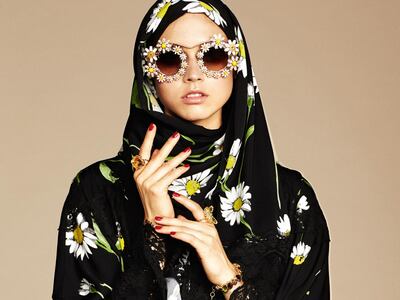
Dolce & Gabbana Abaya A/W 2016 | Source: Courtesy
Consumer lifestyles also continued to evolve, and this year saw a marked rise in fashion companies responding to these lifestyles with tailored offers and collections. In particular, four fashion categories surged in 2016 in response to new or growing consumer lifestyles. First, athletic wear has grown significantly in response to consumers' push for casualisation, having grown at 10 percent over the past 10 years, according to the McKinsey Global Fashion Index, while apparel and footwear overall were growing at 4 percent. Second, genderless fashion collections have emerged for those unwilling to conform to the traditional male- or female-only clothing staples. Zara launched their first "genderless" collection in March this year, following earlier moves by the likes of Selfridges to reconfigure its gender departments the year before. Third, the focus on plus-size fashion is at an all-time high, with the number of mentions of "plus- size" in the fashion press so far in 2016 tripling versus last year. Fashion brands are rapidly responding to a cultural shift towards body positivity and a growing appreciation of curvy figures, by designing specifically for a larger range of sizes rather than just expanding their size range as an afterthought. Fourth, modest wear has also gained in prominence in the past year, highlighting the unique needs and growing importance of devout Islamic consumers, especially from the Middle East and South East Asia; this has been particularly led by brands such as Uniqlo and Dolce & Gabbana, which unveiled hijab and abaya collections in Europe at the beginning of this year. According to the Global Islamic Economy report, the modest-wear market alone is forecast to be worth $327 billion by 2020. Not only are mainstream brands becoming more aware of this opportunity but the market itself is expanding.
Taken as a whole, these markets may well create sizeable new opportunities for mid-market and luxury players. More importantly they all highlight an overarching consumer lifestyle need for personalisation and customisation. Brands have started to respond to that in innovative ways, leveraging consumer data to offer digital personalised shopping services at a mass-market level — something that just a few years ago was exclusively the preserve of high-end luxury players.
ADVERTISEMENT
5. Digital upgrades
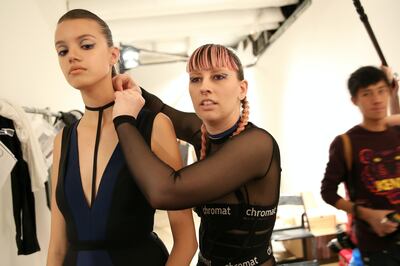
Chromat A/W 2016 | Source: Courtesy
Part of the reason why consumers have been able to seek discounts and promotions has been their uptake on e-commerce and digital tools, which has created price transparency across brands and regions. Over the past few years, consumers have grown more comfortable with digital interactions and buying online. While online sales are growing at a steady pace — even in luxury from 3 percent of sales in 2010 to 12 percent of sales in 2020 — one of the challenges fashion companies face is striking the right balance between online and in-store assortments and, of course, pricing. In 2016, digital platforms and strategies became more prevalent, integrated and sophisticated. One such example is Amazon.com, which has decided to enter the fashion business as a strategic choice, given its existing competencies. In February, it launched seven of its own pure-play brands sold exclusively on its site. This adds further pressure to store-based retailing, which continues to ebb away, slipping particularly badly in the department store category.
While e-shopping is certainly quickening the competitive metabolism of the fashion industry, 2016 saw a surge in the innovative use of digital tools to engage with consumers in a new way, and drive sales. For instance, virtual reality (VR) headsets are introducing the industry to the immersive world of three-dimensional fashion shows. During the September 2016 New York Fashion Week, 13 shows in all were broadcast in 360-degree VR, including collections from Prabal Gurung, Rebecca Minkoff and Erin Fetherstone. Dior and Tommy Hilfiger are just two of the brands using VR in stores to transport headset-clad shoppers to prerecorded catwalk shows. While VR is currently a novelty, many industry insiders believe it holds immense promise as a new medium for immersive story-telling in future.
6. System slowdown
Because of today’s volatile global economy and increasingly demanding consumers, significant pressures are being introduced to an inherently fragile fashion system. Since the financial crisis of 2008 and 2009, industry sales have slowed across every significant category, from clothing and footwear, to bags and luggage, watches and jewellery. As shown by McKinsey’s Global Fashion Index projections for 2016, there are early signs some of these categories are staging a mild recovery.
Increasing price and demand volatility have also complicated the picture. In comparison with the price index of consumer goods, the price index for apparel fluctuates more strongly across countries throughout the year as brands adjust to demand. Inevitably, that uncertainty in demand places more inventory at risk. In the first half of this year, for example, the US retail industry’s inventory-to-sales ratio hit a new high since 2009. This is not the healthiest metric for US retailers, so this point bears close monitoring.
7. Cost burdens
In order to maintain margins in the wake of slow sales, companies look at restructuring as a measure to reduce costs; however, over the past year, many factors — from exchange rate fluctuations and labour costs to the cost of raw materials — have raised sourcing costs. Indeed, cost-control measures, whether sourcing from emerging low-labour-cost countries or more efficient manufacturing techniques, have largely been exhausted. For instance, according to the Cotlook A Index, the average price of cotton has ticked higher in 2016 than in the past two years, and continues to increase. While the traditional answer has been to diversify sourcing as one way of keeping costs low, today there are only so many options for production. Many fashion companies across the spectrum, from Burberry, Sonia Rykiel, Roberto Cavalli to Ralph Lauren and Marks & Spencer, have undertaken restructurings and job cuts, even shuttering stores and reviewing their store networks, all in an effort to make ends meet. But the cost pressures persist.
8. Instant gratification
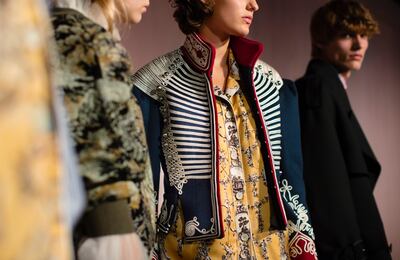
Burberry September 2016 | Source: Courtesy
A more demanding consumer and a bid by fashion brands to create additional demand have also forced an increase in the speed of delivery of products across fashion's market segments. Running counter to cost-reduction measures, fashion companies are attempting to increase sales by responding more rapidly to consumer demand. Though the rapid lifecycle of mass-market collections in the fast-fashion category is well known, it is now reaching the luxury and affordable luxury segments, putting additional pressure on supply chains and distribution management in 2016. This shows no sign of abating: whether feeding instant gratification or building out delivery channels, brands have pushed boldly into the digital era where customers globally have virtual access to fashion shows and buy collections at the click of a button. Some luxury brands, led by Burberry, Tom Ford and Tommy Hilfiger, have experimented with the "see-now, buy-now" approach, extending it all the way to the runways of September's fashion shows. Others — both luxury and mass-market brands — are experimenting with same-day, or in specific markets, even one-hour delivery. The jury is still out on whether these new approaches will win over the most demanding customers while also maintaining margins and profitability over the longer term.
9. A creativity crisis
Experimenting with fashion cycles is not new. The pace of fashion has accelerated greatly in recent years, with many brands increasing the number of collections — now averaging six per year — and ratcheting down the lead times for pieces, even at the luxury end of the spectrum. Now, however, this combined with other pressures has led to an unprecedented level of turnover among creative directors for several major luxury and fashion brands, with designer exits and arrivals at Christian Dior, Lanvin, Calvin Klein, Saint Laurent, Ermenegildo Zegna, Berluti, Balenciaga, Oscar de la Renta, Brioni, and Carven, amongst others.
At the same time, the reduced time between cycles has led to an increase in alleged plagiarism, as the pressure to create new collections is as much a concern for mass-market players as it is for luxury brands. Even fast-fashion companies are adjusting their processes to accommodate even shorter design cycles.
Another form of pressure bearing down on creativity comes from the way new designs are sanctioned for production. Fashion designers are being encouraged to take more input from the buying and merchandising teams to react to what is selling rather than defining what will sell through forward-looking design risks.
How the various pressures on fashion players will reach equilibrium remains, for now, an open question.
10. Responsible innovation

Copenhagen Fashion Summit 2016 | Source: Courtesy
Finally, if 2016 was a year of opposing forces clashing, the push for sustainability was one common thread across the industry. Sustainability is becoming an important new driver of consumers’ purchasing decisions. In emerging markets, for example, more than 65 percent of consumers actively seek out sustainable fashion. Global population growth, climate change, land and water scarcity and the increasing cost of key resources have a direct impact on the bottom line of every company. The speed of fast fashion amplifies these issues and magnifies five fundamental problems for the fashion industry: high water consumption, discharge of hazardous chemicals, violation of human rights, labour standards, greenhouse-gas emissions and waste production. For fashion companies, responding to these issues has become an area of potential differentiation and creative inspiration underscored by the theme for the 2016 Copenhagen Fashion Summit, “Responsible Innovation.”
A number of cross-industry initiatives have highlighted the potential for identifying more sustainable ways to work across a product's whole lifecycle. For several years now some of the largest fashion companies, such as H&M and Nike, have publicly set sustainability goals, and established awards to promote collaboration and set standards for closed-loop fabric imports and other forms of material innovation. This year, Nike unveiled its European Logistics campus in Belgium, founded on responding to sustainability challenges and maximising performance while minimising footprint. This is an area that offers real benefits for fashion brands, whether mass-market or luxury, as all companies are under pressure to increase transparency on inputs and reveal more of the pedigree of their products.
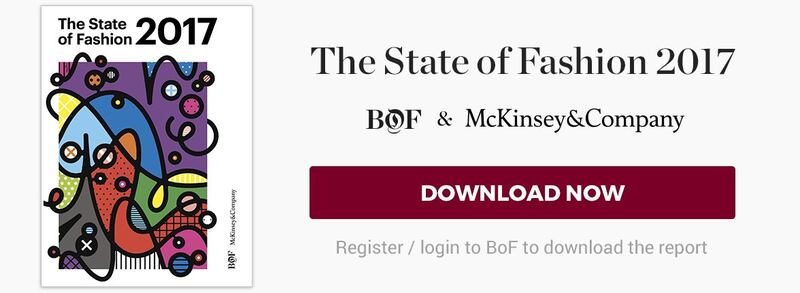
The State of Fashion 2017 is The Business of Fashion and McKinsey & Company's in-depth report on the global fashion industry in 2017, focusing on the themes, issues and opportunities impacting the sector and its performance.
The Coach owner’s results will provide another opportunity to stick up for its acquisition of rival Capri. And the Met Gala will do its best to ignore the TikTok ban and labour strife at Conde Nast.
The former CFDA president sat down with BoF founder and editor-in-chief Imran Amed to discuss his remarkable life and career and how big business has changed the fashion industry.
Luxury brands need a broader pricing architecture that delivers meaningful value for all customers, writes Imran Amed.
Brands from Valentino to Prada and start-ups like Pulco Studios are vying to cash in on the racket sport’s aspirational aesthetic and affluent fanbase.